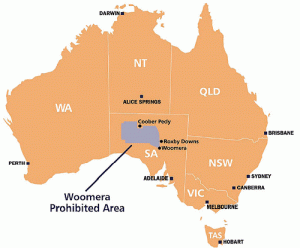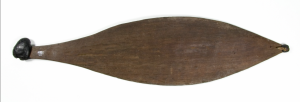Satellites, from an archaeological perspective, can be viewed as much more than just a future (or present-day) artifact. With the launch of Landsat, NASA revolutionized imaging on earth, and has allowed for the discovery of new archaeological sites, allowing archaeologists to preserve more of the past. The idea of imaging earth from space came about after the launch of Surveyor 1 and the Lunar Orbital platforms. These satellites took extremely details pictures of the surface of the moon and other planets, but they were not made for looking at earth. (Aldenderfer, 2019). Soon after, imaging of earth from space became popular, starting with the United States Department of Defense, who kept most of the images classified. With the launch of the Landsat Program, advance images of earth are now in public domain, able to be used by Archaeologists eager to study the hidden sites of the earth. (Giardino, 2010)
Figure 1: Landsat satellite in orbit. Retrieved from https://www.nasa.gov/mission_pages/landsat/overview/index.html
In the 1980s, Archaeology saw an increased use of these satellites for learning about sites on earth. In 1984, Boston University sponsored a conference on satellite imaging and archaeology as a response to the growth in usage of these satellite images. (Sever and Wiseman, 1989). The conclusions of the conference were widely agreed upon, and stipulated that these images should be used in learning about the relationship between environment and society, ancient and present, and should be focused especially in places with endangered resources. (Giardino, 2010).
One example of the use of the Landsat program occurred in Guatemala, which aimed to understand the Ancient Maya relationship to the rainforests of Northern Guatemala. The satellite images revealed that swamps made up to 40% of the land space in the rainforest, and they changed with the seasons. It also revealed different vegetation, as well as other small changes that occurred that could elucidate the mystery of what wiped out the Maya. Through the satellites, not only is environmental information found, but archaeological sites can be discovered. Through this project, 70 new Archaeological sites were discovered. (Sever and Irwin, 2003)
 . Figure 2: Satelite image of Maya ruins. Retrieved from https://earthobservatory.nasa.gov/images/6293/maya-ruins
. Figure 2: Satelite image of Maya ruins. Retrieved from https://earthobservatory.nasa.gov/images/6293/maya-ruins
The rainforest is incredibly dense, an area that is hard to study without some form of aerial imaging, though the use of these satellites, so much more can be discovered. Satellite images reveal vegetational change, differing elevations on which sites are located, and the courses of water features. The use of satellites has made imaging much more cost-efficient and accessible. (Sever and Irwin, 2003)
Works Referenced
Sever, Thomas L., and Daniel E. Irwin. “LANDSCAPE ARCHAEOLOGY: Remote-Sensing Investigation of the Ancient Maya in the Peten Rainforest of Northern Guatemala.” Ancient Mesoamerica 14, no. 1 (2003): 113–22. doi:10.1017/S0956536103141041.
Wiseman, James R. “Archaeology Today: From the Classroom to the Field and Elsewhere.” American Journal of Archaeology 93, no. 3 (1989): 437–44. https://doi.org/10.2307/505593.
Giardino, Marco J. “A History of NASA Remote Sensing Contributions to Archaeology.” Journal of Archaeological Science 38, no. 9 (September 2011): 2003–9. https://doi.org/10.1016/j.jas.2010.09.017.
Aldenderfer, Mark S. 2019. “What Did the Moon Landing Do for Archaeology?” Anthropology News 60 (5). https://doi.org/10.1111/an.1276.
Further Reading:
https://www.nasa.gov/mission_pages/landsat/overview/index.html
https://researchoutreach.org/articles/archaeology-space-using-earth-observation-data-unearth-past/



















